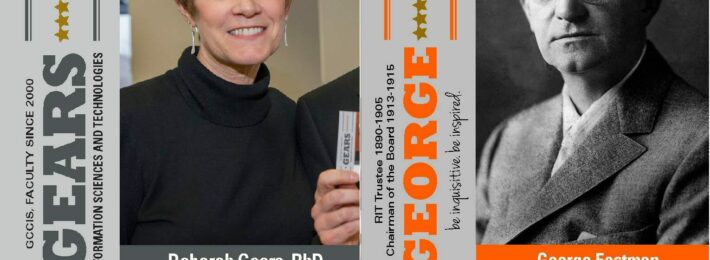
Institutions seeking to encourage interdisciplinary collaboration in research and teaching are pursuing an array of approaches: hiring faculty into multiple departments based on shared interdisciplinary interests, launching research initiatives that provide additional funding to get interdisciplinary projects off the ground, and providing shared research spaces. One of the challenges that often remains is that faculty often work in a relatively isolated manner, with little awareness of research, faculty work, or even faculty interest outside their own department.
“At first, we thought the problem was related to idea sharing. We learned that the problem existed earlier in the collaboration lifecycle − people didn’t really know what other people did across campus.”
Deborah Gears, RIT
The Rochester Institute of Technology in Rochester, NY has struck on a creative and unusual approach to bridging this knowledge and communication gap. RIT’s new project, dubbed “George™,” uses Scholar Trading Cards™ and a searchable faculty database to enhance networking among faculty.
It is a deceptively simple idea. Intrigued, we talked with Deborah Gears, RIT associate professor, College of Computing and Information Sciences, to learn more about:
- What George™ is
- How the college hopes the project will inspire collaboration
- What other institutions might learn from RIT’s model
George™: Be Inquisitive, Be Inspired
RIT’s project begins with Scholar Trading Cards™: physical cards that feature RIT faculty and that can be shared like a business card. The cards function as “micro-profiles” that impart essential contact information and other facts to encourage better networking and collaboration. Here’s an example:
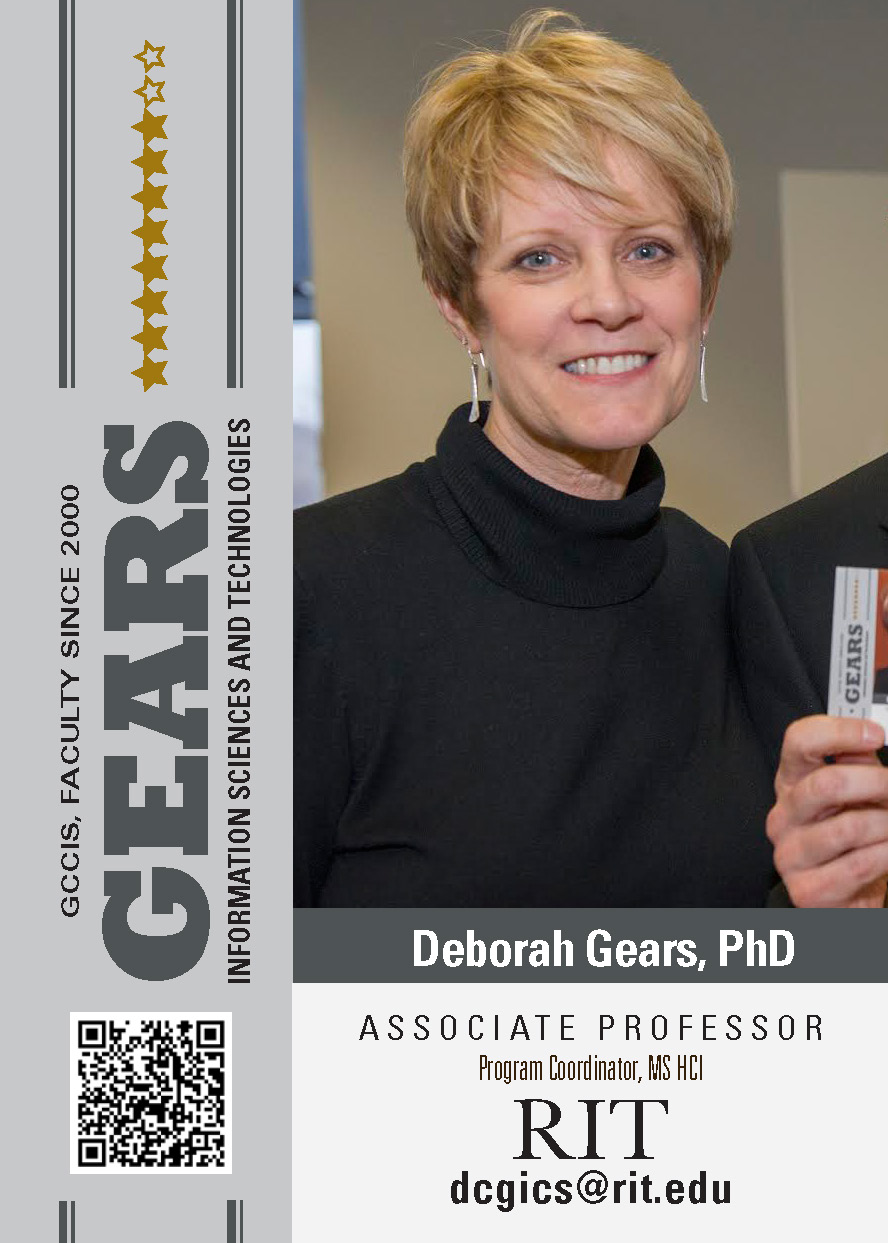
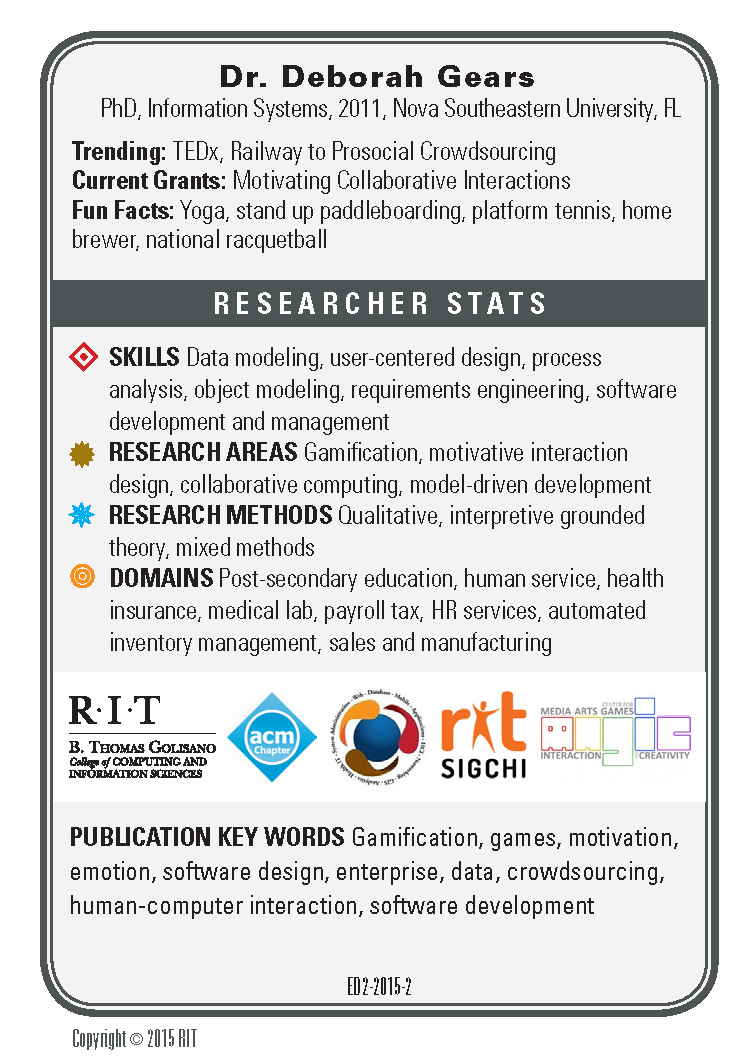
These trademarked cards are patterned after baseball cards; the front of the card includes a large professional photo along with professional and contact information, including a QR code that allows faculty to add the card to a digital card collection. The back of the card shares faculty “stats,” such as:
- Year of degree
- Current research
- One thing a researcher wants others to remember about them
- Domains
- Skills
- Research methods
- Publication keywords
- Professional affiliations, represented through logos
- Fun facts to make the card more personal
These cards are a conversation-starter, but the backbone of the project is its digital card collection: a central, searchable database for potential collaborators. RIT students, faculty, and alumni can all access the database and search for any of the data on the card in order to look for a collaborator talent in a particular area.
Users of the database can also maintain and curate their own collection of potential collaborators and their digital cards.
Game Design: How George™ Will Drive Collaboration at RIT
George™ was developed after Gears received grant money to address issues with collaboration by creating an experience that would pique curiosity, be fun, and employ gamification. Gears designed the project to address three intrinsic motivations — curiosity, honor, and idealism — and she included subtle game design elements throughout the experience to make use of the cards and the database more fun and engaging.
For example, game elements include:
- Collaboration credits, earned as users add cards to their collection
- Credits for referring people to George™
- Credits for users who introduce to each other two researchers who may be interested in collaborating
“Referring one researcher to another uses social capital, engages a level of trust, and builds this collaborative network behind the scenes.”
Deborah Gears, RIT
The credits allow users to share more of their own cards. Other surprises, like providing ten additional cards to early adopters, also provide extra incentive. “It’s the things inside it that are a little more playful and fun,” Gears adds. “A little bit of personality is coming out in these cards, along with the skills and the talents and the knowledge that can be mobilized within a university.”
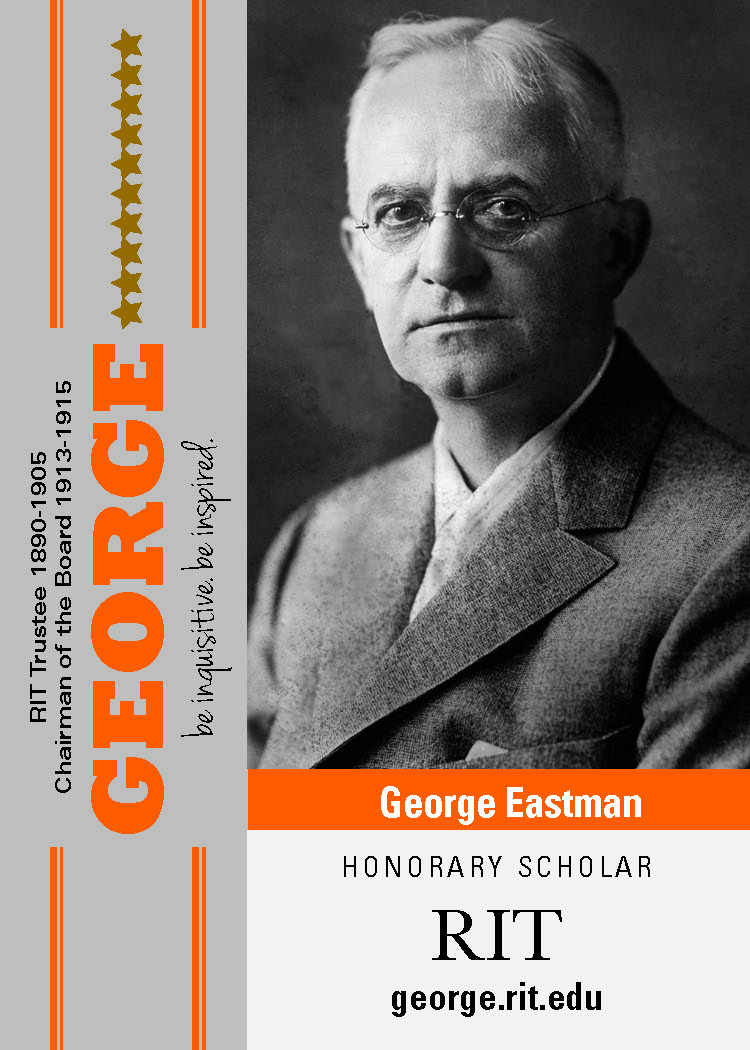
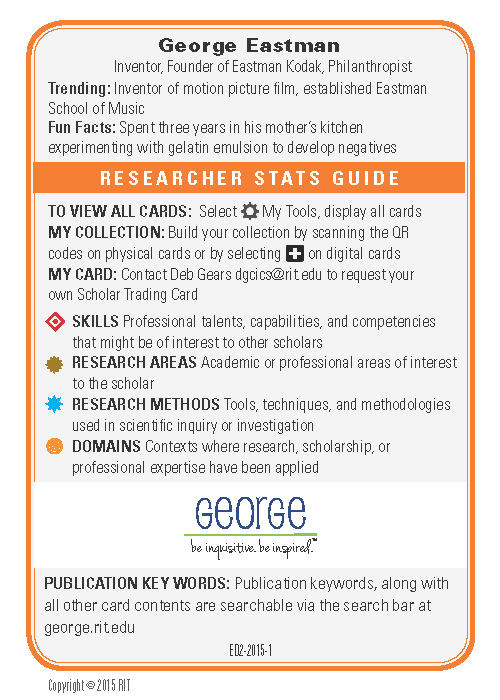
RIT began working on the project eight months ago, and approximately 40 cards are currently in circulation. More are expected as new faculty are offered an opportunity to create their own cards this fall. Gears will speak about the entire platform and the science behind the experience at the new faculty orientation, and will also have a table set up to offer demos of the new database.
RIT has also organized two mixers in which faculty from one department were interested in meeting faculty from a different department. Cards were made before the mixers so that faculty could share them, and projection was used to rotate life-size versions of cards around the room during the event.
RIT expects the cards will help researchers become more aware of their colleagues’ work, make new connections across campus, and increase the impact of grant work and interdisciplinary research at the institution. “We’re hoping this becomes a collaborator engine through volitional participation,” Gears concludes.
“It’s a great way for faculty to connect in a very easy fashion,” notes Lynn Wild, Associate Provost for Faculty Development and The Wallace Center, whose office provided some of the funding for George™. “We think it’s going to be great for mentoring and getting people to connect.”
RIT also believes this will not only improve collaboration among faculty, but also among alumni and students interested in research, co-op opportunities, or other partnerships.
The website and the cards are in the process of trademark, copyright, and potential patent.
Looking Ahead: What You Can Learn from George™
What can you do at your institution to motivate and remove obstacles to interdisciplinary collaboration?
Here are a few suggestions:
- Develop a central, searchable database of researchers.
- Identify what will most effectively motivate researchers at your institution.
- Incentivize interdisciplinary networking and reward faculty initiative in undertaking collaborative research.
RIT is interested in expanding this project to include other research organizations, and Gears invites interested researchers to contact her for inquiries at dgc@it.rit.edu.


